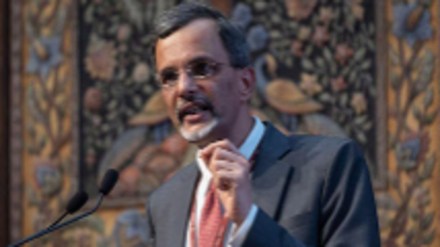A continuously evolving and improving insolvency framework is important for India to achieve 7-8% GDP growth over the next decade, Chief Economic Adviser V Anantha Nageswaran said on Tuesday.
“India’s growth aspirations require capital to operate at the frontiers of productivity and efficiency. An efficient bankruptcy system will free up capital, allowing better production, employment, and growth prospects,” said Nageswaran at the Insolvency and Bankruptcy Board of India’s (IBBI) eighth annual day event.
The CEA stated that the next step towards Insolvency and Bankruptcy (IBC) reform is to improve operational efficiencies to speed up the resolution process. “Improving efficiencies (should be done) using innovative resolution routes, such as pre-pack arrangements for MSMEs, inter disciplinary capacity building of resolution professionals, and reducing judicial delays,” he added.
That said, Nageswaran also highlighted that IBC has generated system benefits in other areas of the economy. He said that currency mismatches in the corporate sector have reduced after India’s bankruptcy reforms. “The likelihood of firms with high degree of currency mismatch, issuing ECB (external commercial borrowing) loans on a fully hedged basis went up 14% yearly post IBC introduction,” he said.
Additionally, IBC lowered credit spreads for bonds issued by non-financial firms. “An effective IBC is critical for bond investors to develop confidence in the Indian market,” the CEA said.
On low recoveries, Nageswaran said that “recovery only reflects the extent of value erosion by the time a company enters bankruptcy process.”
As of June 2024, the approved resolution plans, on average, yielded 84.93% of fair value of stressed assets of the Corporate Debtors (CDs) as realisable value, higher than 83.89% recorded till June 2023. Also, the realisable value, as a percentage of admitted claims, stood at 32.06% till June 2024, compared to 31.62% till June 2023.
At the same event, India’s G20 Sherpa Amitabh Kant said there is a need for “tribunal process reengineering”, and necessary infrastructure support to the National Company Law Tribunals (NCLTs) should be provided by the government, for reducing delays in the resolution process.
Kant highlighted that insolvency resolutions at the National Company Law Tribunal (NCLT) averaged 716 days in the last fiscal year, up from 654 days in 2022-23.
With investments, private capital, and future ready innovation, judicial process reengineering could enhance administration of justice in India, stated Kant.
The former NITI Aayog CEO also emphasised on the need to adopt cross- border insolvency norms, and the creditor led resolution process (CLRP), “which will revolutionise the resolution process by reducing the load of NCLTs”.
IBBI Chairman Ravi Mittal, meanwhile, said that the IBC recovers as much as 84% of fair value of the companies as 50% of the asset’s value is already lost due to delay in admission by creditors.
“When cases are admitted in IBC, they have already lost 50% of the value. IBC is not responsible for cases brought late,” Mittal said, while adding that India’s recovery rate, however, is comparable to that of Europe, and better than the US, he added.
Ramalingam Sudhakar, president NCLT, at the same event stressed on the need for manpower addition: He stated: “Give me the numbers, I will give you the result.” Sudhakar said, “NCLT has taken over the work of Company Law Board, Company Courts of High Courts…takes over little bit of commercial court. IBC came in later on and no courts was provided for the same. This is greatly impacting the adjudicatory process,” he said.
